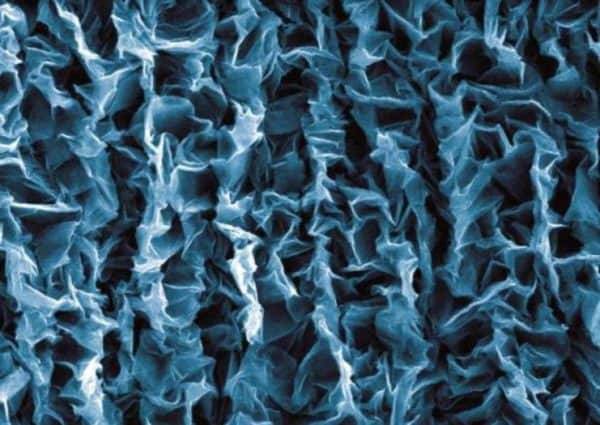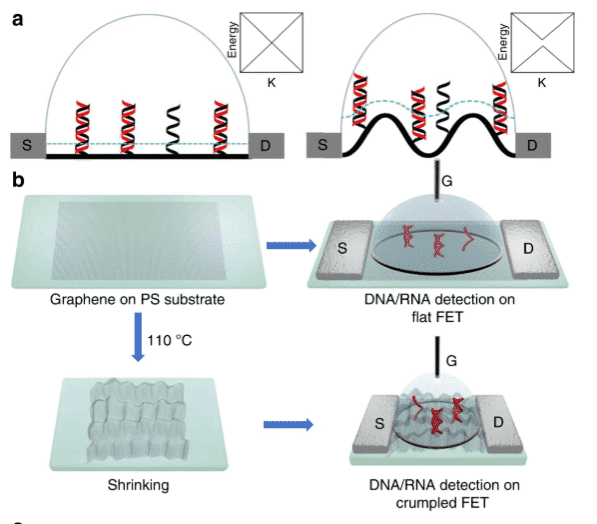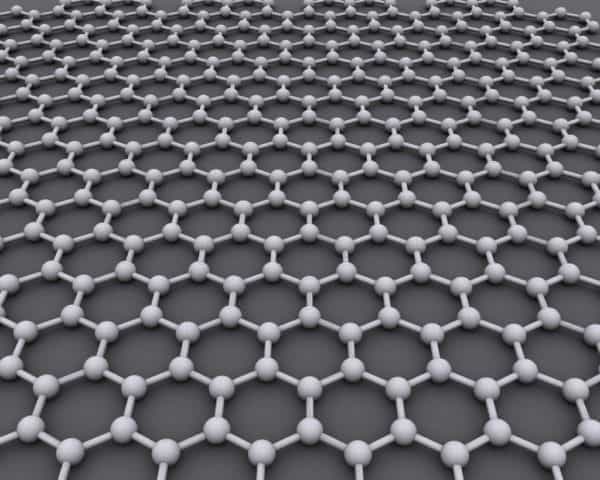
 The wonder material that is graphene may have another feather in its cap in the form of cancer detection.
The wonder material that is graphene may have another feather in its cap in the form of cancer detection.
Researchers at The University of Illinois at Urbana-Champaign have found that by scrunching up graphene an electrical hotspot was created that trapped and retained RNA and DNA molecules. The crumpled graphene out-performed flat graphene by tens of thousands of times in terms of detection.
It is the process of wrinkling the graphene that makes this method unique and is attracting increased attention.
According to Rashid Bashir, a professor of bioengineering and the Dean of The Grainger College of Engineering at The University of Illinois at Urbana-Champaign, the crumpled graphene “can detect ultra-low concentrations of molecules that are markers of disease, which is important for early diagnosis. It’s very sensitive, it’s low cost, it’s easy to use, and it’s using graphene in a new way”.
The findings were published in the journal Nature Communications on March 24 in an article called “Ultrasensitive detection of nucleic acids using deformed graphene channel field effect biosensors”.

So how does it work and what would this new method hope to replace?
The analysis of blood samples to detect cancer cells that have shed from a tumour or pieces of tumour DNA circulating in the bloodstream is a detection method called liquid biopsy. This type of biopsy is useful in detecting early stage cancers, monitoring the effectiveness of current cancer treatments, or determining if the cancer has returned.
Liquid biopsy has some great advantages compared to traditional biopsy. Liquid biopsy is non-invasive, painless, more affordable and has a quicker diagnosis time.
A liquid biopsy can also help to detect cancers in areas not amenable to biopsies such as the brain. Traditional biopsy on the other hand is quite invasive due to surgically extracting tissue that can be very painful to the patient. Traditional biopsies are also expensive and time consuming.
In the article ‘Techniques of using circulating tumor DNA as a liquid biopsy component in cancer management’ the authors address the disadvantage of liquid biopsies.
“Since circulating tumour DNA is highly fragmented and its concentration can be extremely low in a high background of normal circulating DNA, screening for clinically relevant mutations is challenging,” they say.

Furthermore, the researchers note that liquid biopsies need a shedding cancer molecule for detection and a lot of it.
In comes crumpled graphene.
Graphene’s physiochemical characteristics are perfect for the job. As discussed in the article ‘When biomolecules meet graphene: from molecular level interactions to material design and applications’, which was published in the journal Nanoscale, the two-dimensional structure, high conductivity, mechanical properties and large surface area make graphene a well-known material intended for electronic sensors.
Graphene is one of the strongest materials known to man and is quickly becoming known as one of the most versatile, too. Just one atom thick, the material is a hundred times stronger than steel and has been used to create body armour that is actually stronger than diamonds, as an an effective saltwater desalination tool and to create batteries that effectively last forever.
Integrating diagnosis methods such as the crumpled graphene method may be extremely useful for patients in remote areas that can not easily access medical clinics to undergo a surgical biopsy, as mobile laboratory services are starting to become common.
One important caveat: not all cancers will be detected using the liquid biopsy or the crumpled graphene method. Non-shedding cancer cells will not circulate in the blood and therefore can not be detected using either liquid biopsy methods.
And though the findings are encouraging, renowned medical oncologist specializing in the treatment of patients with non-small cell lung cancer, Harvard’s Dr. Geoffrey R. Oxnard points out that a negative diagnosis in any liquid biopsy will still require a traditional biopsy.
So what’s the bottom line here? The findings in the study could mean that quicker and pain free biopsies are in our future, not to mention decreased cost to an already overwhelmed healthcare system.
Leave a Reply
You must be logged in to post a comment.




 Share
Share Tweet
Tweet Share
Share




Comment